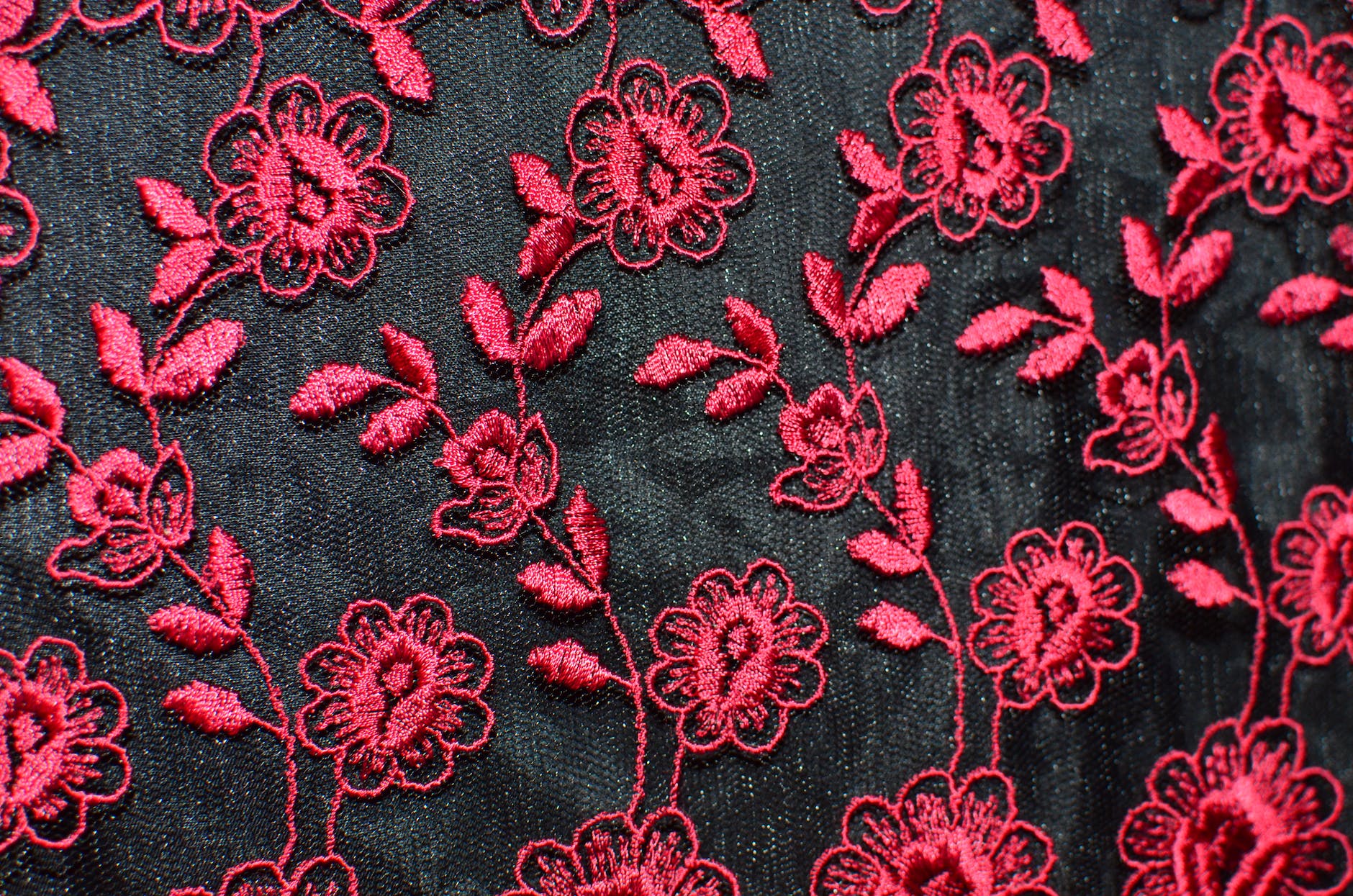modern embroidery: contemporary styles and innovative techniques
Embroidery has decorated furnishings, clothing, and artwork for centuries. But today’s artists are taking the tradition to new heights with their experimental and creative techniques.
Improvisation is one way that modern embroiderers are shaking things up. They’re stitching without a plan, letting the thread lead the way. This can result in unexpected and beautiful results.
Dimensional approaches are another way that modern embroiderers are pushing the boundaries of the medium. They’re adding depth and texture to their work by using different materials, such as beads, buttons, and wire.
Abstraction is also becoming more popular in embroidery. Artists are using the medium to create abstract patterns and designs that are more about emotion and feeling than they are about realism.
Non-traditional materials are also being used in embroidery today. Artists are stitching with everything from yarn to plastic to metal. This is opening up new possibilities for the medium and allowing artists to express themselves in new and innovative ways.
The experimental mindsets of today’s embroiderers are advancing the medium as a fine art. They’re showing that embroidery can be used to create work that is both beautiful and thought-provoking.
Characteristics of Contemporary Embroidery
Modern creative directions range widely, but often share qualities like:
- Assemblage using non-textile materials like wire, plastic, or found objects
- Abstract and conceptual content rather than realistic representation
- Raw, exposed, or frayed edges instead of hoops and framing
- Digital processes alongside or combined with handwork
- Sculptural shapes that extend outward from the fabric surface
- Social, political, or edgy themes rather than traditional motifs
- Mixed media collages with photography, paint, printing, and unconventional stitches
- Blanket stitch edges that become integral decorative elements
- Asymmetry, irregular proportions, and intentional distortions
By breaking conventions, today’s embroiderers express individuality and the time we live in.
Dimensional and Sculptural Needlework
Contemporary stitchers build up designs to occupy space beyond the flat fabric surface. Some techniques include:
- Adding heavy embroidery over padding to create texture and relief
- Incorporating thick yarns, ribbons, cords, wires that extend outward
- Stitching separate padded shapes and assembling into sculptures
- Covering or outlining found objects from other materials
- Shaping fabrics into curves, pleats, cones that cast dramatic shadows
- Allowing stitched elements to fray and ravel into organic forms
- Quilting puffy batting sections for trapunto surface effects
- Cutting away background fabrics or applying sheer overlays
Exploring Conceptual Themes
Today’s artists approach embroidery as a fine art medium for expressing views. Their work tackles concepts like:
- Feminist narratives exploring identity, equality, and empowerment
- Expressions of LGBTQ+ pride and gender fluidity
- Environmentalism and using recycled materials
- Political/social justice issues like racism, violence, inequality
- Mental health awareness and therapeutic embroidery practice
- Applying modern art styles like abstract expressionism to textile arts
- Challenging traditional expectations of embroidery as decorative and dainty
Using Technology and Mixed Media
Innovators combine hand stitching with digital processes for fresh effects:
- Scanning and digitally manipulating stitched art then reprinting onto fabric
- Laser cutting fabric shapes to applique onto embroidered backgrounds
- Using software programs to draft unique patterns
- Embroidering over photographs, scanned documents, photocopies
- Integrating QR codes or barcodes into designs
Mixed media work brings in unconventional materials:
- Photo transfers apply vintage imagery to embroidered fabric
- Collaging bits of paper ephemera into art quilts
- Affixing pins, buttons, beads, shells, charms, or found objects
- Incorporating conductive thread, optic fibers, vinyl, Tyvek
Improvisational Embroidery
Some modern artists take a freeform approach without patterns or planning. Instead they develop stitched motifs intuitively in the moment by:
- Doodling with needle and thread following inner inspiration
- Letting shapes emerge at random, without concern for perfection
- Using a limited palette of neutral or tonal threads
- Creating dense repetitive textures and marks
- Allowing background fabrics to show through stitches for transparency
- Responding to music, meditation, or natural scenery through abstract stitches
- Exploring unconscious themes, emotions, or ideas through stitching
Modern embroidery is a vibrant and exciting field. Artists are pushing the boundaries of the medium, using innovative techniques and materials to create work that is both beautiful and thought-provoking.
This article has explored some of the key characteristics of contemporary embroidery, including improvisation, dimensional approaches, abstraction, and non-traditional materials. We have also looked at how artists are using technology and mixed media to create new and innovative work.
The future of embroidery is bright. With so many talented and creative artists working in the field, we can expect to see even more exciting developments in the years to come.
I hope this article has inspired you to explore the world of modern embroidery. With its rich history and vibrant present, there is something for everyone in this fascinating field.
Here are some additional thoughts that you can include in the conclusion:
- The impact of modern embroidery on society. How is modern embroidery changing the way we see the world? How is it challenging traditional ideas about art and beauty?
- The future of modern embroidery. What new directions do you see the medium taking in the years to come? What new techniques and materials will artists be using?
- Your own personal thoughts and opinions about modern embroidery. What do you find most exciting about the field? What are your hopes for the future of modern embroidery?
